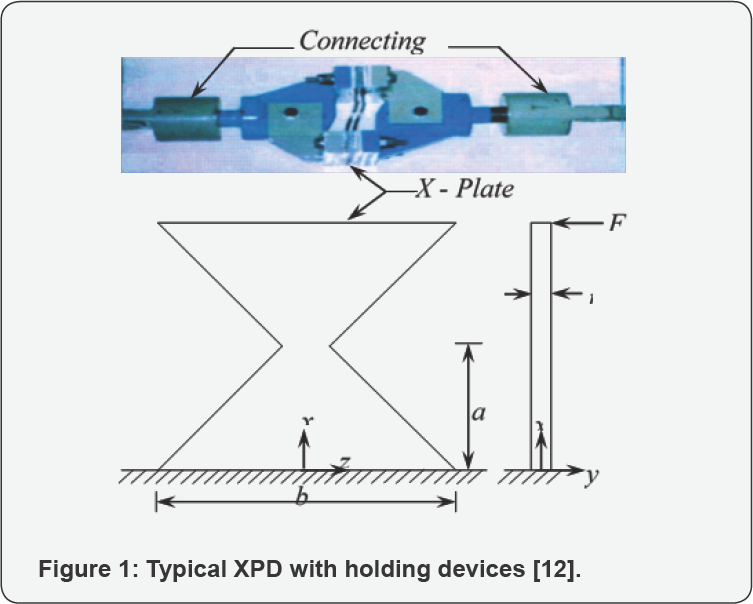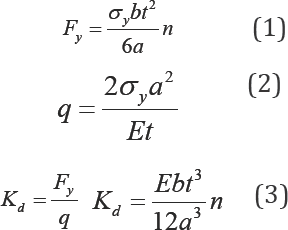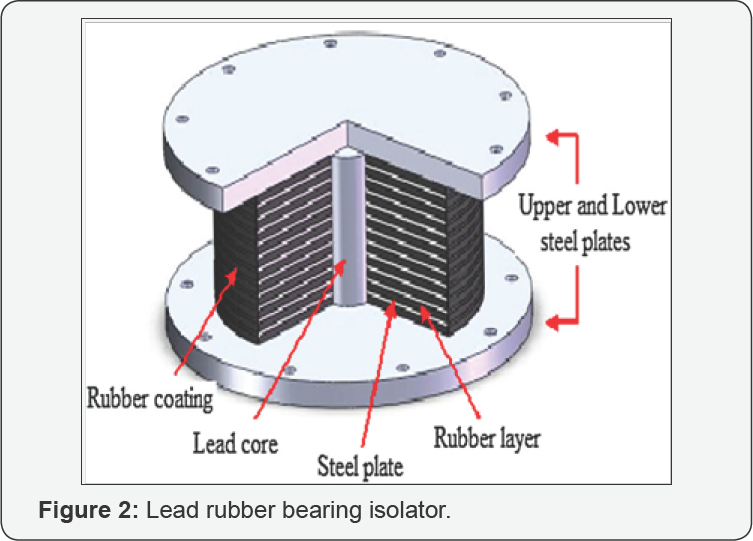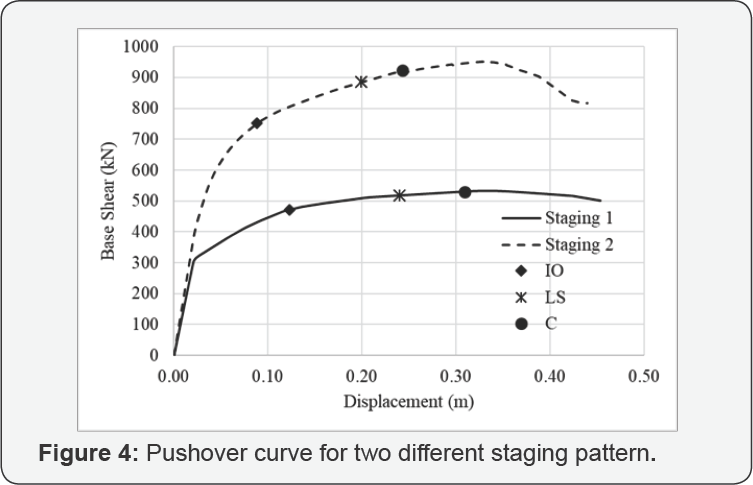Earthquake Response Control of RC Water Tower Frame Staging Using Special Protection System Sakshi Manchalwar
Sakshi M*
Assistant Professor, Department of Civil Engineering, Priyadarshini J. L. College of Engineering, India
Submission: December 07, 2017; Published: March 19, 2018
*Corresponding author: > Sakshi M, Assistant Professor, Department of Civil Engineering, Priyadarshini J L College of Engineering, Nagpur, Maharashtra, 440009. Email: manchalwarsakshi@gmail.comHow to cite this article: Sakshi M.Earthquake Response Control of RC Water Tower Frame Staging Using Special Protection System Sakshi Manchalwar. Civil Eng Res J. 2018; 4(1): 555626.DOI:10.19080/CERJ.2018.04.555626
Abstract
In this paper, nonlinear performance of elevated water tank staging has been studied. For this purpose, two different staging pattern are selected for same water capacity of tank and performance are compared. Further nonlinear dynamic behaviour is studied by performing nonlinear time history analysis. The results show unsafe response conditions of structural elements and based on these results two protective system are proposed. Base isolation system (Laminated rubber bearing) and passive energy dissipation devices (Metallic damper) are used to control seismic response of tank staging. The effectiveness of two protective systems to control response of tank staging are discussed.
Keywords: Water tank staging; Time history analysis; Metallic damper; Isolator; LRB
Abbreviations: IO: Immediate Occupancy; LS: Life Safety; C: Collapse
List of Symbols
Kd = Initial Stiffness of the XPD;
Fy = Yield Load of the XPD
q = Yield Displacement of the XPD.
E = Elastic Modulus of the Damper Material
σy = Yield Stress of the Damper Material,
a = Height of the XPD
b = Width of the XPD
t = Thickness of the XPD
Introduction
Elevated water tanks are commonly used in public water distribution system. Being an important part of lifeline system, and due to post earthquake functional needs, seismic safety of water tanks is of considerable importance. Elevated water tanks also called as elevated service reservoirs (ESRs) typically comprises of a container and a supporting tower (also called as staging). The column-brace frame type of staging is essentially a 3D reinforced concrete frame which supports the container and resists the lateral loads induced due to earthquake or wind. Aim of the present study is to bring out the differences in seismic behaviour of column-brace (staging) frame in the post-elastic region and to quantify their ductility. In addition, nonlinear dynamic analysis is also performed to bring out the differences in the nonlinear dynamic behaviour of two types of frames. Soni et al. [1] investigated the behaviour of liquid storage slender and broad tanks isolated by the double variable frequency pendulum isolator. Seleemah and Sharkawy [2] investigated the seismic responses of base-isolated broad and slender cylindrical liquid storage ground tanks by using three types of isolation systems. Panchal and Jangid [3] using Variable Frequency Pendulum Isolator The seismic response of liquid storage steel tanks was studied.
X-Plate Damper (XPD)
X - Plate damper is used to control earthquake vibrations. For this purpose, dampers are connected diagonally in structure. XPD is most effective for dissipation of seismic energy due to inelastic deformation of mild steel. One or more number of plates are used depending on requirement. X - plate of dimensions 120mm overall depth, 40mm width and 6mm thick is used. Initially Kelly et al. [4] was introduced this device and number of experiments was performed with structure to know efficiency of damper and same work was followed by Skinner et al. [5] and Tyler [6]. Bergman & Goel [7] and Whittakar [8- 9] investigated dynamic behaviour of damper experimentally further the application of damper for seismic retrofitting project was explained by Matinez-Romero [10] and Perry et al. [11] and studied the effectiveness of damper. A geometrical shape and supporting device used in this work is shown in Figure 1.

Using beam theory, the properties of XPD are expressed in equation (1) to (3),

Lead Rubber Bearing Isolation


Lead rubber bearing consist of lead core and laminated rubber. The rubber in the LRB acts as spring. More rigidity added in isolator due to lead core which is provided in centre shown in Figure 2. Lead core having low yield strength but it exhibits elasto-plastic in nature [12]. Base isolation system helps to protect structure from force of vibration. It offers high vertical stiffness due to rubber reinforced by steel plates and it is very soft laterally.
The characteristics of the lead material have been considered in the production of LRB systems. In general, lead has a low yield point when its shear stress reaches 10MPa, and it exhibits elasto- plastic behavior. Lead is also resistant to repeated loads and can renew itself over time following deformation, Komur [13].
Case Study
The characteristics of the lead material have been considered in the producThe present study is divided into two phase, in first phase seismic performance evaluation of two different tank staging is done for same tank capacity and compared the nonlinear static performance. In second phase, the seismic response of staging for nonlinear dynamic analysis is study. This nonlinear time history analysis is performed for two real ground motions in SAP2000NL. The results show the unsafe response of staging members and based on these results two protective systems are proposed. Base isolation system and passive energy dissipation devices are used. For base isolation and passive energy dissipation, laminated rubber bearing and metallic dampers are used respectively. These protective systems significantly reduced the seismic response of structure which makes safe response of conditions of staging [14,15].

In first phase of work two rectangular staging are consider for this study with capacity of 250m3. The details and geometrical properties of staging shown in Figure 3. Constant storey height 3m is considered above ground level and the foundation depth is assumed at 2m. The design seismic forces has been calculated as per IS 1893:2014 (part 2). Circular column of 450mm diameter, top beam of 300 x 600mm and bracing of 300 x 450mm are used for modelling of staging. The grade of concrete with nominal characteristic compressive strength of 25MPa and reinforcing steel having yield strength of 500MPa has been used in design.
Figure 4 shows capacity curve which gives comparison between two types of staging used for same capacity of water tank. Staging 2 having additional diagonal bracing in plan which improve performance of staging as compare to staging 1. Performance of structure has been classified into different levels, viz. Immediate Occupancy (IO), Life Safety (LS) and Collapse (C). Immediate Occupancy, means the post-earthquake damage state in which only very limited structural damage has occurred. Life Safety Performance Level means the post-earthquake damage state in which significant damage to the structure has occurred, but some margin against either partial or total structural collapse remains. Collapse Performance Level means the structure is on the verge of experiencing partial or total collapse.

Further study has done on same type of staging. Nonlinear time history analysis has performed for with and without protection system and results show the significant reduction in response quantities.For numerical analysis two earthquake records, listed in Table 1, were taken from ATC-40. These time histories have been scaled to spectral compatible time history data with peak ground acceleration of 0.36g.
Figure 5 & 6 shows acceleration comparison of staging I and II with and without base isolation system for two different earthquakes. The amount forces exerted on structure is depends on acceleration. Figure 5 & 6 shows 30-40 % reduction in acceleration thus earthquake shears are also reduced.
Figure 7 & 8 shows displacement comparison of staging I and II with including metallic dampers. Due to effectiveness of damper, top displacement is significantly reduced. Figure 7 & 8 shows 50-60 % reduction in displacement by metallic damper and makes structure safe.







Table 2 & 3 gives amount of energy dissipated by protection system. More than 60% energy is dissipated by isolators and dampers. Thus less energy will dissipate by inherent damping of structure and structural damages will minimize.
Conclusion
In present work two different staging pattern are considered for same water capacity of tank. Seismic capacity of both the staging is determined by nonlinear static analysis. Staging II gives more capacity due to addition of extra bracings. The seismic demand of staging is obtained by performing nonlinear time history analysis. To reduce response of structure base isolation system and metallic damper is installed separately. Following conclusions are drawn:
a. Due to base isolator there is significant reduction in acceleration of both staging. Therefore, less shear force will act on structure.
b. Metallic damper is more effective to reduce displacement of structure to make it safe. More deformation is one of the cause of damage, hence metallic damper is effective to minimize the damages in tank staging.
c. Earthquake gives large amount of energy to the structure which causes the damages in structure due to increase in potential energy of structural elements. But with the help of isolators and damper more energy can dissipate and less energy is offered on structure. The results show more energy is dissipated by special protection systems.
References
- Soni DP, Mistry BB, Panchala VR (2011) Double variable frequency pendulum isolator for seismic isolation of liquid storage tanks. Nuclear Engineering and Design 241: 700-713.
- Seleemah AA, Sharkawy ME (2011) Seismic response of base isolated liquid storage ground tanks. Ain Shams Engineering Journal 2: 33-42.
- Panchal VR, Jangid RS (2011) Seismic Response of Liquid Storage Steel Tanks with Variable Frequency Pendulum Isolator. KSCE Journal of Civil Engineering 15(6): 1041-1055.
- Kelly JM, Skinner RI, Heine AJ (1972) Mechanisms of energy absorption in special devices for use in earthquake resistant structures. Bull NZ Soc. Earthquake Eng 5(3): 63-88.
- Skinner RI, Kelly JM, Heine AJ (1978) Hysteretic Dampers for Earthquake Resistant Structures. Earthquake Engineering and Structural Dynamics 3(3): 287-296.
- Tyler RG (1978) Tapered steel energy dissipators for earthquake resistant structures. Bull NZ Nat Soc Earthquake Eng 11(4): 282-294.
- Bergman S, Goel S (1987) Evaluation of cyclic testing of steel-plate devices for added damping and stiffness. Report UMCE 87-10, Department of Civil Engineering, University of Michigan.
- Whittaker AS, Bertero VV, Alonso LJ, Thompson CL (1989) Earthquake simulator testing of steel plate added damping and stiffness elements. Report UCB/EERC-89/02, Earthquake Engineering Research Center, University of California at Berkeley
- Whittaker AS, Bertero VV, Thompson CL, Aionso LJ (1991) Seismic testing of steel plate energy dissipation devices. Earthquake Spectra 7(4): 563-606.
- Martinez-Romero (1993) Experiences on the use of supplementary energy dissipators on building structures. Earthquake Spectra 9(3): 581-626.
- Perry CL, Fierro EA, Sedarat H, Scholl RE (1993) Seismic Upgrade in San Francisco Using Energy Dissipation Devices. Earthquake Spectra 9(3): 559-579.
- Manchalwar AA, Bakre SV (2016) Performance of RC Structures Equipped with Steel and Aluminium X-Plate Dampers. Journal of Institute of Engineers India Series A, 97(4): 415-425.
- Komur MA (2015) Soft-Story Effects on the Behavior of Fixed-Base and LRB Base-Isolated Reinforced Concrete Buildings. Arabian Journal for Science and Engineering 41(2): 381-391.
- SAP2000NL, Integrated Software for Structural Analysis & Design, Technical Reference Manual. Computers & Structures, Inc.
- ATC-40, 1996: Seismic Evaluation and Retrofit of Reinforced Concrete Buildings, Applied Technology Council.






























